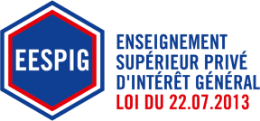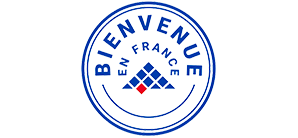Collaborative projects
CAPNAV project Characterization of Particulate Emissions from Ships
Purpose: To determine the fine particle emissions produced by marine engines from intermediate-sized ships serving the Ponant islands (Sein, Ushant).
The aim of this project is to:
- Define and test in the laboratory instrumentation for on-board measurements.
- Quantify stack emissions dynamically, in particular during port manoeuvers, with real-time acquisition of ship parameters.
- Test innovative emission reduction solutions: with marine diesel additive or LNG propulsion (Liquid Natural Gas) installed on the Brittany Ferries ship HONFLEUR.
- Conduct air quality measurement on board, to evaluate exposure to passengers and crew to fine particles.
Cluster: approved by the competition cluster Pôle Mer Bretagne Atlantique.
Shipowners: Penn Ar Bed, Brittany Ferries.
Academic stakeholders: IMT Institut Mines Telecom.
Shipbuilders and engine providers: Chantiers de l’Atlantique, MAN.
ESTACA team: QUAD (Air QUAlity and Depollution)
Duration: 3 years (2019-2022).
CAPTIHV project (Characterization and Analysis of Pollutants from Automotive Transport and their Infiltration in Vehicle Passenger Compartments)
Project Purpose: Characterization of the concentrations of pollutants infiltrating the passenger compartments of vehicles, through on-board measurements during driving and identification in the laboratory of the mechanisms enabling infiltrations using wind tunnel studies.
Competition cluster: ID4CAR.
Partners: Estaca’Lab (Pilote), Airparif, Coria (Université de Rouen), Aerosol Laboratory (South California University).
ESTACA Team:Mechanical and Environmental Research Department (MSCE).
Duration: 3 years (December 2015 to January 2019).
MIMe Project (Mechatronic Integration and Simulation Module)
Project Purpose: Project Purpose: to enable structured, instant and efficient collaboration in projects that deal with the design of mechatronic systems by developing a dedicated tool to facilitate data exchange between clients and suppliers. This is used to facilitate exchanges between stakeholders and optimize new engine innovation design processes.
Competition Clusters: Mov’eo, Systématic.
ESTACA Team: Energy and Embedded Systems for Transport (S2ET).
Duration: 3 years (2015-2018).
Partners include
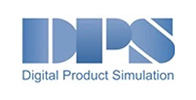
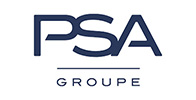
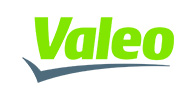
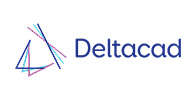
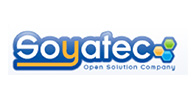
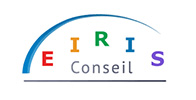
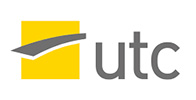
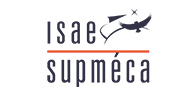
DYNAFIB Projects (Dynamic Products Reinforced with Continuous Fibers)
Project Purpose: Production of antivibration components made of thermoplastic composite with local continuous fiber reinforcement. The project aims at creating a new second-life raw material, comprised of composites and plastics, that is lightweight, elastic, insulating, shock-resistant and modular design.
Competition cluster: EMC2, ID4CAR.
Partners: CooperStandard, Coriolis Composites, LIMATB, CEMCAT, 3MO Performance.
ESTACA Team: Mechanical and Environmental Research Department (MSCE).
Duration: 3 years (2013-2016).
CISACS Project (Innovative Concept for Actuating Secondary Flight Controls and Ancillary Systems)
Project Purpose:In the aeronautics field, the CISACS project is proposing to develop one of the fundamental technologies to enable the technological leap to a more-electric plane. This concerns the complete electrification of actuator systems for secondary flight controls (wing flaps, leading edge slats, air-brakes) and for aircraft ancillary equipment (landing gear, brakes and nose wheel steering).
Competition Cluster: project certified by Astech (Aeronautics and Space in the Paris Region).
Partners: Messier Bugatti Dowty, DGA, ECT Industrie, Eurilogic, INSA.
ESTACA Team: Energy and Embedded Systems for Transport (S2ET).
Duration: 3 years (January 2009 to July 2013).
DEFI COMPOSITE Project
Project Purpose: This program aims at implementing an efficient sector for structural elements made of carbon-fibre based composite materials in transports (aeronautics, automobile, rail and marine). It will enable an increase in mechanical performances and weight reduction in structures and will help to reduce energy consumption and CO2 emissions.
Competition Cluster:project certified by EMC2 (Metal and Complex Composite Assemblies).
Partners: 46 partners including Airbus as leader.
ESTACA Team: Environment and Mechanics of Composite Materials (2MCE).
Duration: 4 years (January 2009 to July 2013).
ECOWINGBOX Project
Project Purpose: Ecowingbox is helping to consolidate expertise in composite materials for the aeronautical sector. The aim is to design a demonstrator for a business aircraft wing box to advance the automation of multipurpose processes, at the right cost. This project will offer industrial solutions for lightening and electromagnetic protection requirements.
Competition Cluster: project certified by EMC2 (Metal and Complex Composite Assemblies).
Partners include: Coriolis Composites, Daher, Euro Engineering, Université de Nantes.
ESTACA Team: Environment and Mechanics of Composite Materials (2MCE).
Duration: 3 years (April 2009 to September 2013).
O4A Project (Open for Autosar)
Project Purpose: The international consortium Autosar ‘(AUTomotive Open System ARchitecture) unites all automobile manufacturers, equipment suppliers and companies specializing in on-board electronics with the aim of drawing up a standard software architecture for the vehicles. O4A aims at developing design tools based on this standard.
Competition Cluster: project certified by ID4CAR (vehicle innovation in the greater west).
Partners: PSA, Valeo, Delfi, PSA, See4sys, Sherpa Engineering, ESEO, IRCCyN.
ESTACA Team: Energy and Embedded Systems for Transport (S2ET).
Duration: 3 years (April 2008 to March 2011).
O2M Project
Project Purpose: The O2M program (Mecatronics Modelling and Design tools) aims at developing a new generation of tools to support the mecatronics design process.
Competition Cluster: project certified by Mov’eo and Systematic.
Partners: Dassault Systèmes, EADS, Renault, Continental Automotive, Safran, Thales, Valeo, Siemens, Sherpa Engineering, Centrale Lyon, ENSEA, IRSEEM, ONERA, ENS CACHAN, SUPELEC, SUPMECA, UVSQ.
ESTACA Team: Environment and Mechanics of Composite Materials (2MCE) and Energy and Embedded Systems for Transport (S2ET).
Duration: 3 years (January 2007 to April 2011).
OCSYGENE+6 Project (Optimization in the Design of On-board air intake and exhaust gas systems for the Euro 6 standard)
Project Purpose: OCSYGENE+6 aims at improving the internal combustion engine and more specifically the air intake and exhaust gas recirculation system. The target is a reduction of 4g/km of CO2, as per EURO6 requirements.
Competition Cluster: project certified by iD4CAR and Mov’eo.
Partners: Ecole Centrale de Lyon/LMFA, Ecole Centrale de Nantes/LMF, Electricfil Automotive, GIE REGIENOV Renault Recherche et Innovation, Sherpa Engineering, Supélec / Département Énergie, Université Paul Sabatier, Mann+Hummel France.
ESTACA Team: Environment and Mechanics of Composite Materials (2MCE).
Duration: 4 years (July 2010 to July 2014).
SOFRACI project (High-yield inverter structure with integrated charge function)
Project Purpose: SOFRACI concerns mechatronics systems for vehicle electrification. The aim is to design a new power structure to enhance the traction and recharge function in contactless electric vehicles. The fields of action are the motor, power electronics, sensors used and control strategies for active elements.
Competition Cluster: project certified by Mov’eo.
Partners: Leroy Somer Duons MCO, Electricfil Automotive, IFSTTAR, LGEP, L2EP, G2ELAB.
ESTACA Team: Energy and Embedded Systems for Transport (S2ET).
Duration: 4 years (September 2009 to September 2013).





